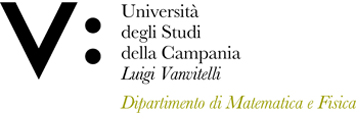Paolo MAREMONTI
Insegnamento di FISICA MATEMATICA SUPERIORE
Corso di laurea magistrale in MATEMATICA
SSD: MAT/07
CFU: 8,00
ORE PER UNITÀ DIDATTICA: 64,00
Periodo di Erogazione: Secondo Semestre
Italiano
| Lingua di insegnamento | ITALIANO |
| Contenuti | L'isegnamento verte su tre differenti argomenti della Fisica Matematica: |
| Testi di riferimento | W. Walter, Ordinary differential equations, Springer |
| Obiettivi formativi | Come naturale prosieguo delle nozioni apprese nei corsi di fisica matematica del triennio, uno degli obiettivi è approfondire alcuni metodi qualitativi per le equazioni differenziali ordinarie, considerate come modelli (dei più noti e consolidati) per la dinamica delle popolazioni o come modelli per alcuni fenomeni di evoluzione in meccanica classica. Lo studente al termine dell’apprendimento comprenderà che i modelli e le applicazioni possono essere differenti, ma i metodi matematici per la discussione dei modelli sono gli stessi. |
| Prerequisiti | Insegnamenti del triennio di laurea in Matematica |
| Metodologie didattiche | Lezione frontale |
| Metodi di valutazione | Prova orale con dissertazione su alcuni argomenti |
| Programma del corso | 1° argomento (3 crediti) |
English
| Teaching language | Italian |
| Contents | The teaching focuses on three different topics of Mathematical Physics: |
| Textbook and course materials | W. Walter, Ordinary differential equations, Springer |
| Course objectives | As a natural continuation of the notions learned in the three-year mathematical physics courses, one of the objectives is to delve into some qualitative methods for ordinary differential equations, considered as models (of the best known and consolidated) for population dynamics or as models for some evolution in classical mechanics. At the end of the learning, the student will understand that the models and applications may be different, but the mathematical methods for discussing the models are the same. |
| Prerequisites | Basic mathematics knowledge usually acquired in university mathematics courses |
| Teaching methods | classroom lecture |
| Evaluation methods | Oral examination on some topics |
| Course Syllabus | 1st topic (3 credits) |








